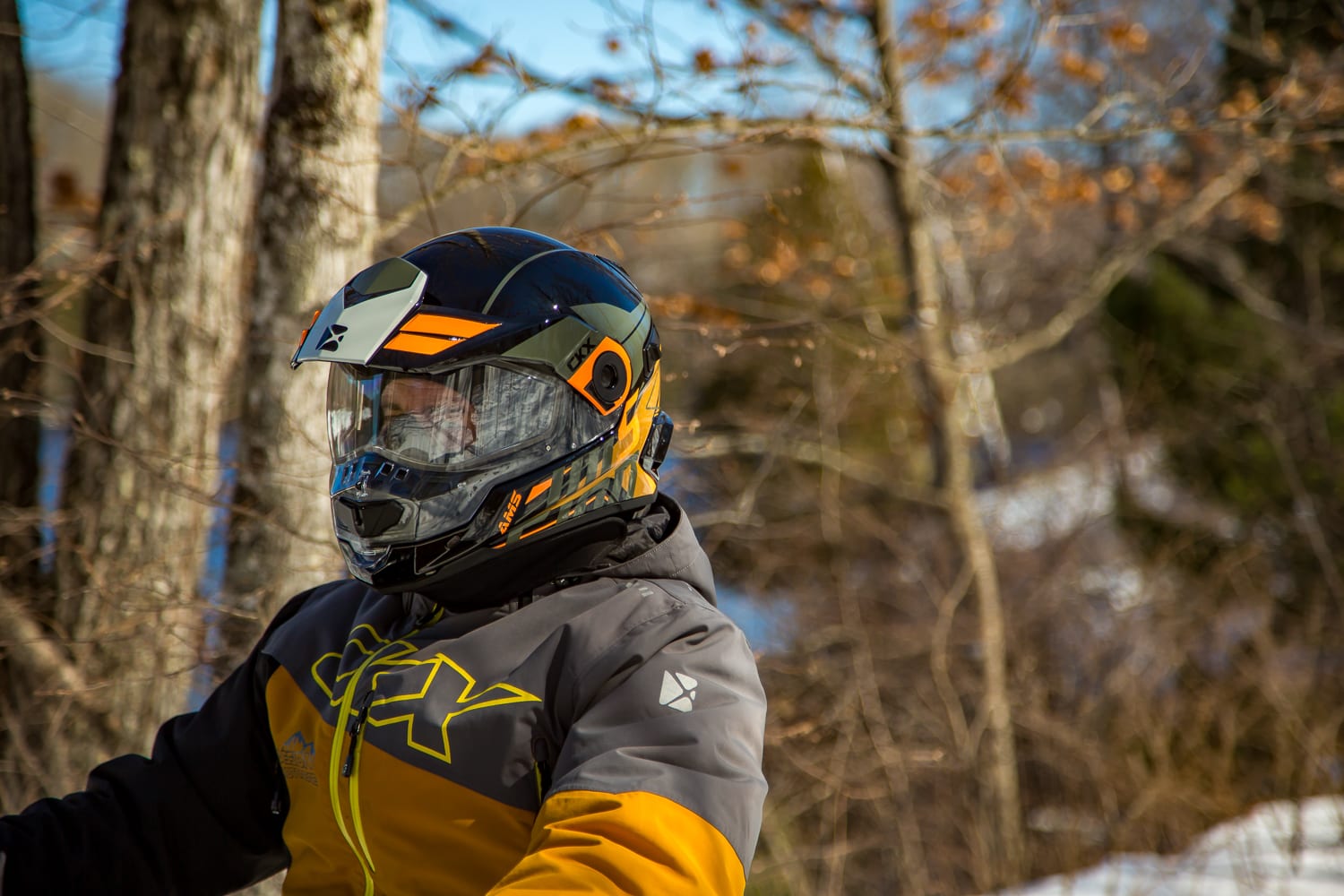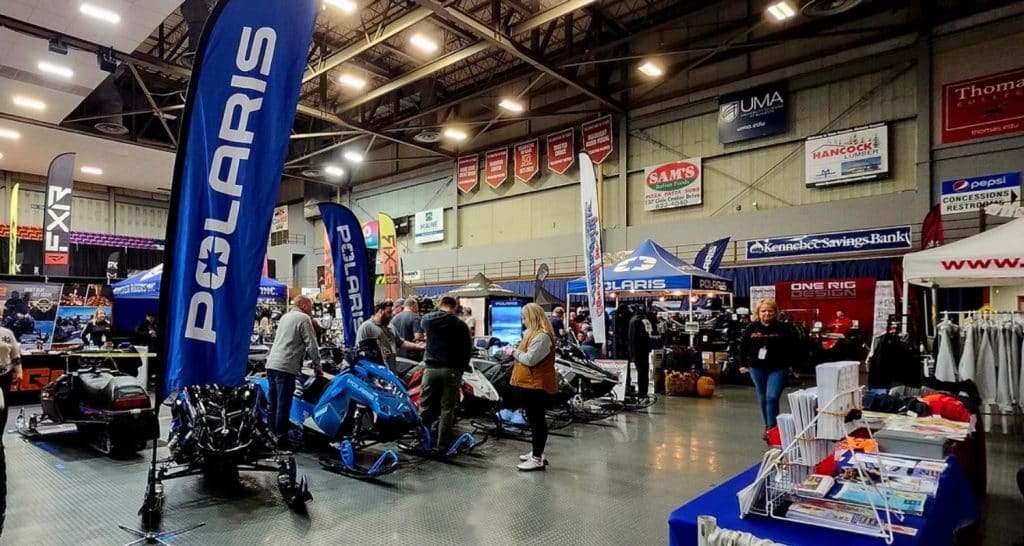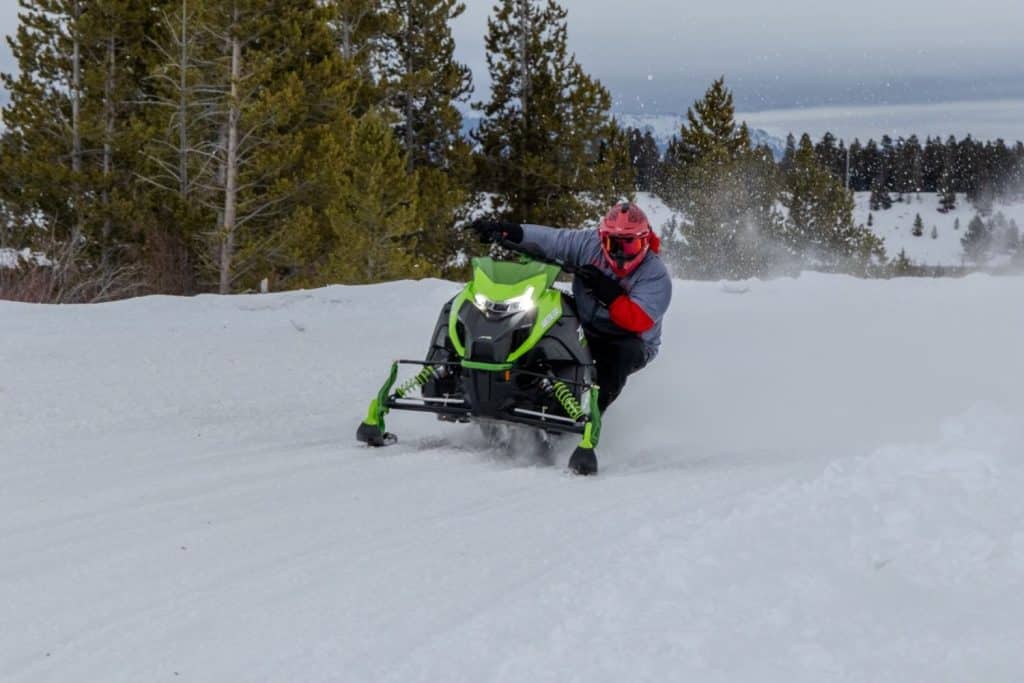Isn’t snowmobiling equipment essential? I truly believe that there is nothing worse than being cold or not feeling comfortable with our equipment. It is very interesting to see how companies are still bringing us great innovations after all these years!
The helmet, unlike the rest of the equipment, plays a multiple role: it must protect you in case of impact, provide good vision and also protect you from the cold. We add the look and comfort, not to be neglected in our sport rather “glammer”. When buying a helmet, a good advisor should ask you about the style of snowmobile you own: low, medium, high or very high windshield. About your riding style: do you only ride on the trail or if you sometimes go off the beaten path, do you ride a little off-trail? Etc. When you visit your retailer, you should always take the time to wear the helmet, with a well adapted hood, walk with it, move, to evaluate its comfort level according to your head and face morphology. If you need to wear corrective lenses, your choice will be limited to only a few helmets on the market, including the Mission, which we will discuss below.
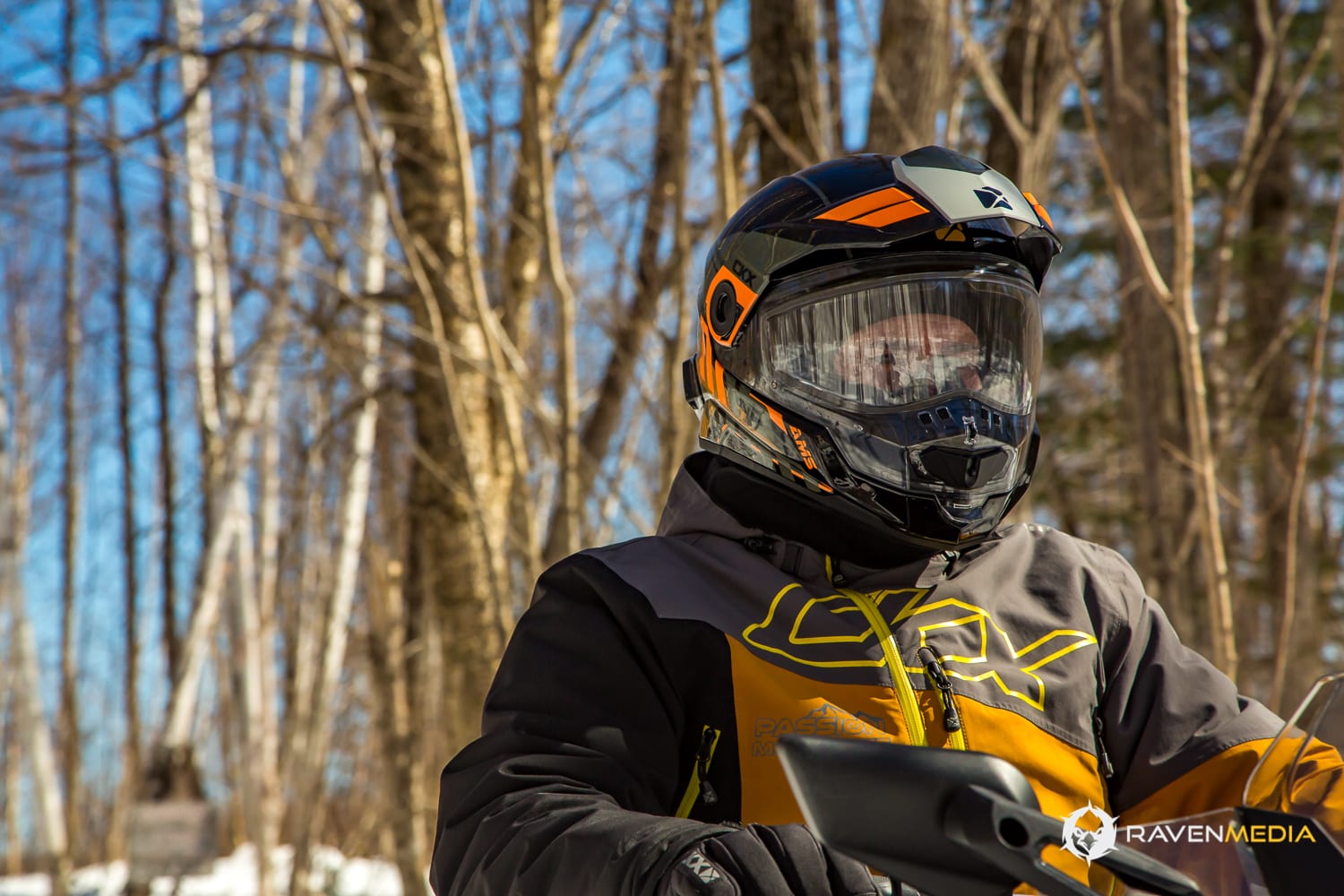
The Mission helmet is above all a helmet designed for the trail enthusiast, and was developed with this in mind. A multitude of color models are available to match your outfit and your snowmobile. It comes with an adjustable and removable aerodynamic paddle, an integrated yellow sun visor and a large chin strap. It is important to mention that the interior has been designed to allow easy and comfortable use of a communication system. On the side of the main visor, there are two ventilation hatches that open into the upper part of the nose guard (breath deflector), and another one that opens into the lower cavity.
AMS stands for Air Management System. While other manufacturers have air evacuation systems, CKX has taken this definition to the extreme to ensure the ultimate evacuation of moist air. In fact, it consists of two very large ducts that connect the lower part of the mouth and nose to the back of the helmet. When riding, a negative pressure (vacuum zone) is created at the back of the helmet that pulls the humid air from the breath outside; it is almost unthinkable that any moisture remains inside.
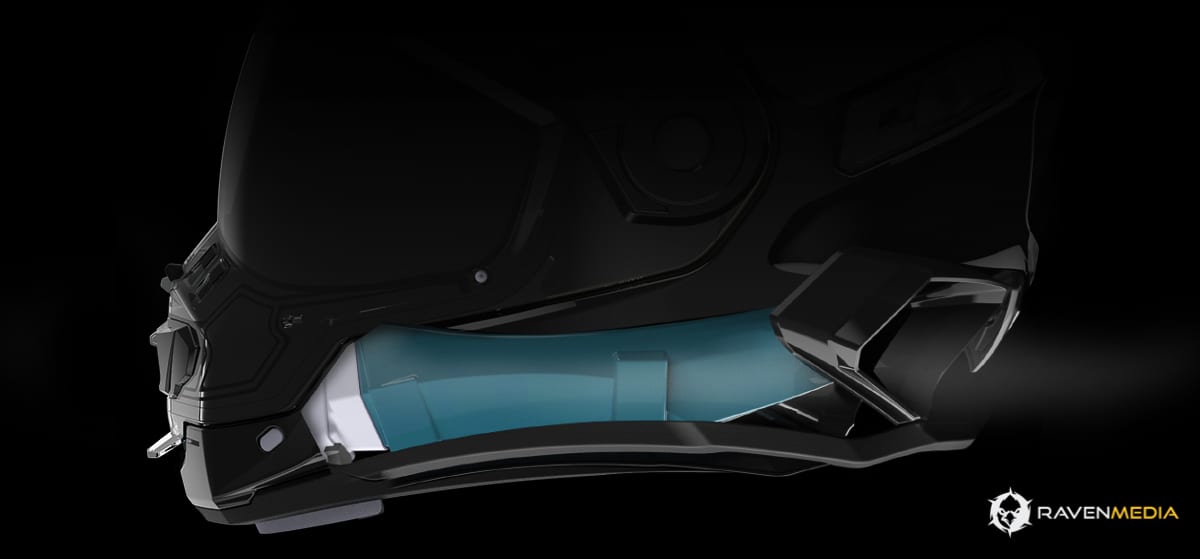
The people at CKX provided me with a prototype helmet that I had to be very critical of, and do a lot of testing on. I noticed a few flaws on this prototype helmet, some of which the engineers already knew about, and all of which will be things of the past in production. Although many people had already tested the helmet, I find it very interesting to have participated in this critical test for them, as it shows the company’s concern to arrive at a finished product with a very high satisfaction rate.
To perform good tests on a helmet, you have to expose it to the most extreme conditions possible. Unfortunately, the coldest spring temperature I experienced was around minus twelve (-12) degrees Celsius. And certainly, the type of snowmobile (windshield) and the speeds can greatly influence the test…
Almost all helmets perform well with a very large windshield… So what better way than to test our Renegade XRS 900 ACE Turbo with the original windshield, which we could rename as an aesthetic accessory!
My tests…
Thursday night at 6:30 pm… Minus two degrees, why not go for a short ride of about 50 km! First ride with the helmet, to get used to it and to validate my choice to use the hood usually used for the Titan helmet. The first few kilometers quickly revealed the unique concept of evacuation; I quickly appreciated the ease of breathing, you don’t really feel any breathing restriction, I would even say that I had the impression of having an open face helmet. This feeling is very pleasant, and honestly, I had never felt such a freedom of breathing with a full face helmet. Although it was not very cold, no problem of condensation or fogging during this first ride.
My second outing was a bit more revealing, as I was able to confront colder temperatures of around -12 degrees Celsius with good winds. I quickly took the opportunity to leave early, as such temperatures in March are becoming rare. I was anxious to see how the Mission would perform at a temperature more conducive to frost or fogging. While it wasn’t a good -25 or -30, it was still a temperature that could portend flaws in the newcomer.
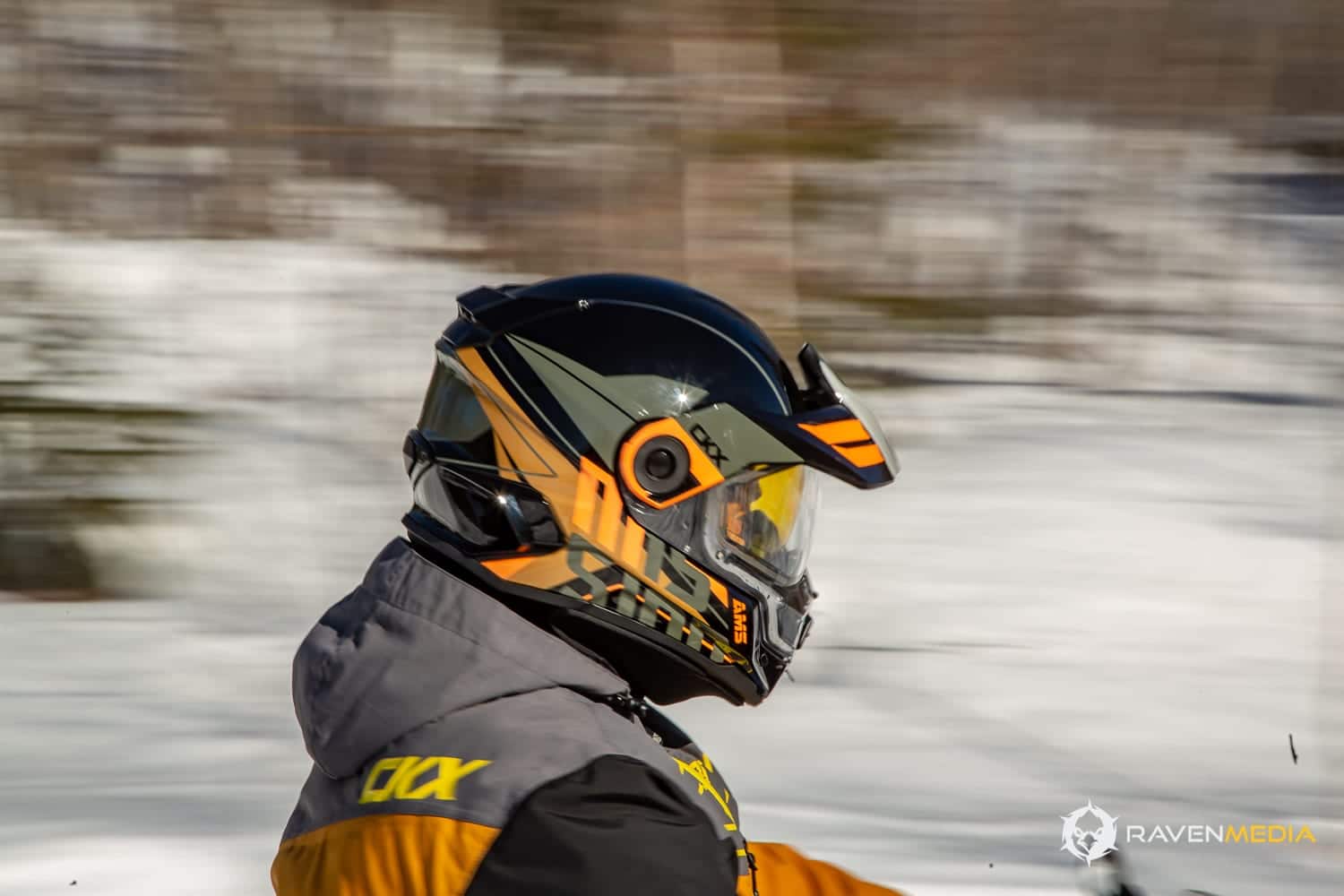
My apprehension was mostly about the coolness in the lower cavity, because the more a helmet breathes, the more air it circulates… Despite the high circulation rate, I couldn’t say that the helmet became too cold or uncomfortable. Yes you feel a cool air circulation at the mouth, but without becoming unpleasant. As far as I’m concerned, more tests at colder temperatures are still to be done; however, the people at CKX confirmed that for tests done during the whole season, their testers did not notice that the helmet became too cold or uncomfortable at much lower temperatures.
The breath deflector (rubber nose cone) is attached to the visor, so it follows the visor when opening and closing. Made of a very flexible material, it can be adjusted with two straps and fits the shape of the face. Essential quality if you want to ensure a watertightness between the breath and the visor. I tried several times to blow hard to cause fogging, without success, and I can assure you that many helmets on the market do not pass this test… The success undoubtedly lies in the flexibility of the deflector that molds well to the shape of the face combined with the ease of evacuation of moisture through the large ducts. The less pressure there is on the mouth, the less chance there is for humid air to act on the deflector and cause fogging.
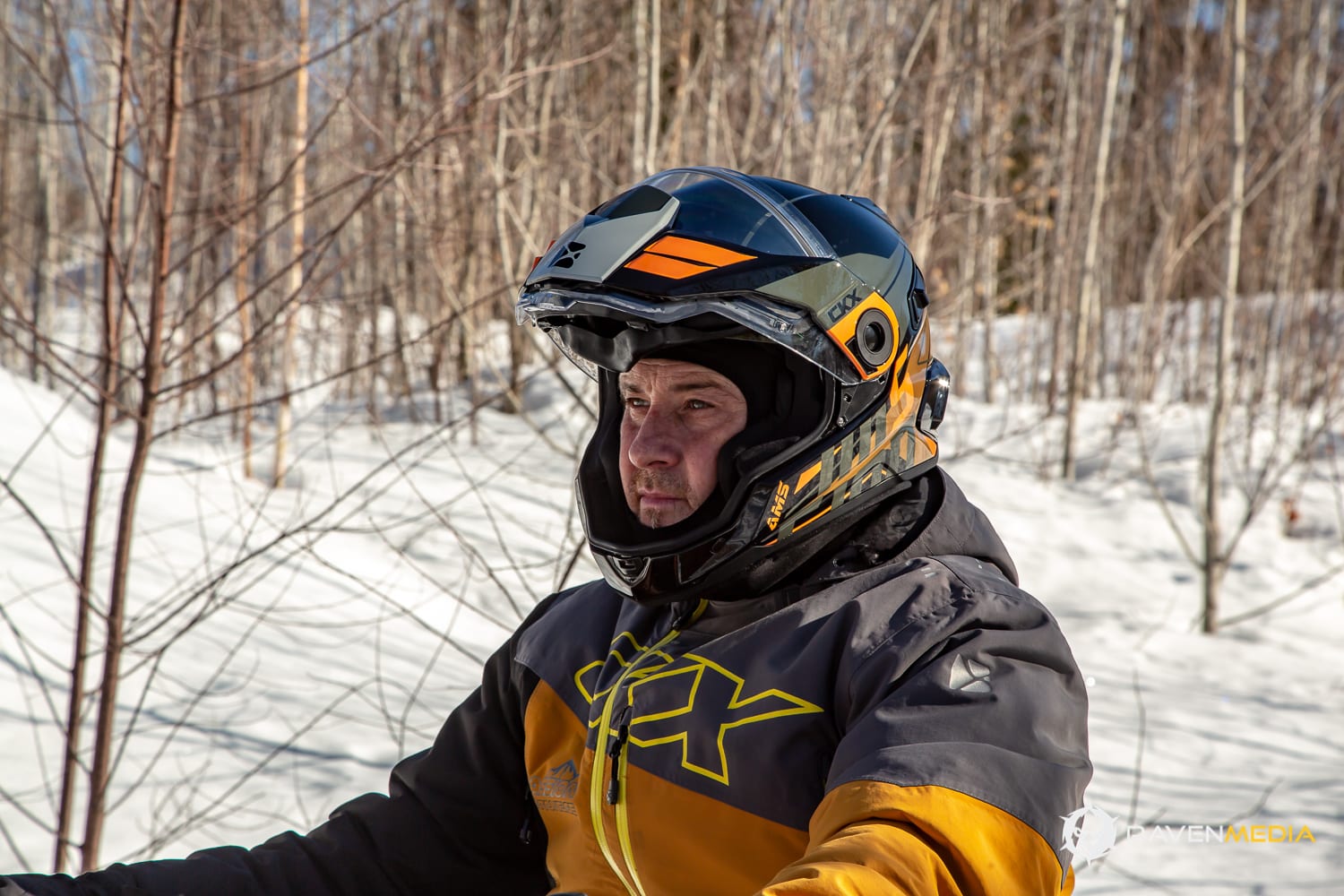
It is also important to take a few lines to discuss the removable paddle. In my opinion, this is the very first helmet where you can give it an aspect other than aesthetics… Let me explain… The adjustment of the paddle on the Mission helmet allows you to lower it very close to your vision, which makes it play the role of a sunshade early in the morning or at the end of the day. Really nice! How many of you ride with one hand over your helmet in the sun during those hours? The adjustment on the Mission almost eliminates this practice, because when lowered to the maximum, the paddle sits right above your vision, offering good protection from the sun. Although CKX doesn’t talk about it much or at all, I can assure you that this is a very nice and safe aspect of the helmet… Bravo!
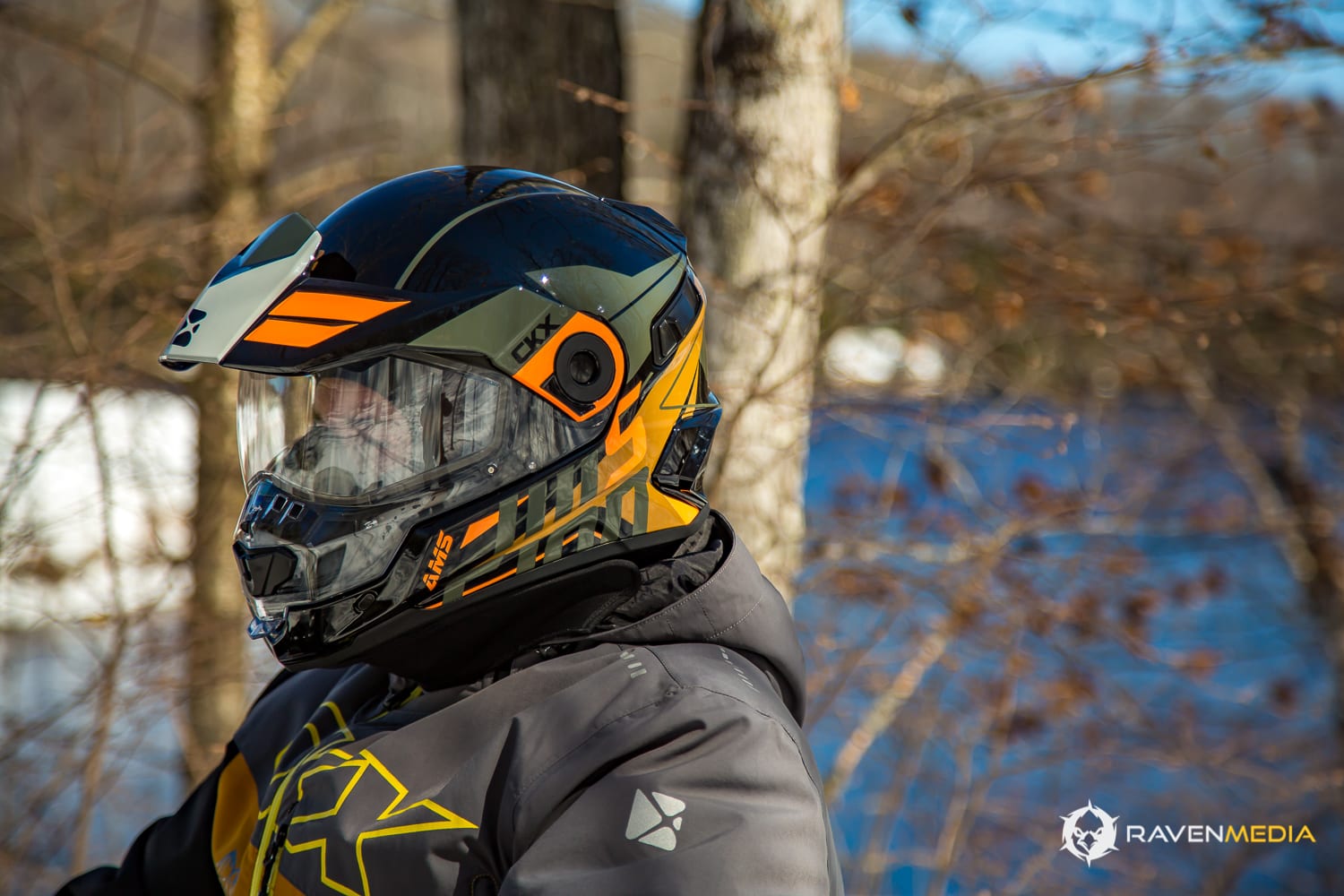
The helmet has a yellow sun visor that can be retracted with a switch on the left side of the helmet. When in use, it covers the entire visual area of the helmet well and fits the shape of the breath deflector well. It is well done on this side.
I also tested with corrective lenses or glasses, because there are few helmets on the market that can be used with glasses without having endless fogging problems. Mission accomplished on this side, and although it is slightly difficult to close the visor, there was no problem during my test. Yes, a bit of fogging may occur at first if the temperature difference is too great, but if your glasses are already at a cooler temperature, the slight appearance of condensation disappears quickly after a few meters. A stability is installed to roll pleasantly with a perfectly clear vision.
I did two more runs with the headphones and my conclusions remained the same as far as performance is concerned. As mentioned earlier, there are a few minor flaws that I noted that will be corrected at the time of release, which is why I didn’t mention them.
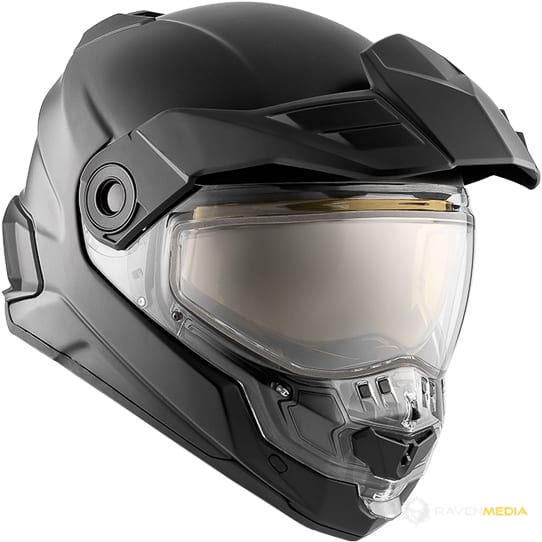
The helmet will be offered with an optional electric visor, but for those who don’t like to bother with a wire, I strongly advise you to try it without it… You’ll be pleasantly surprised… The retail price of the helmet starts at $549.99, up to $849.99 for the Carbon version with electric visor. Moreover, it is among the lightest on the market in its category with a weight of about 1650 grams for the carbon version and 1750 grams for the other models. Available sizes range from XSmall to 3XLarge.
Watch for its release, it may disappear quickly…
Click here for more information on the CKX Mission AMS Helmet

